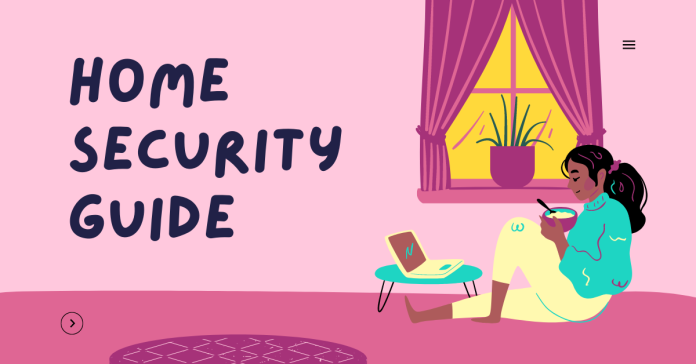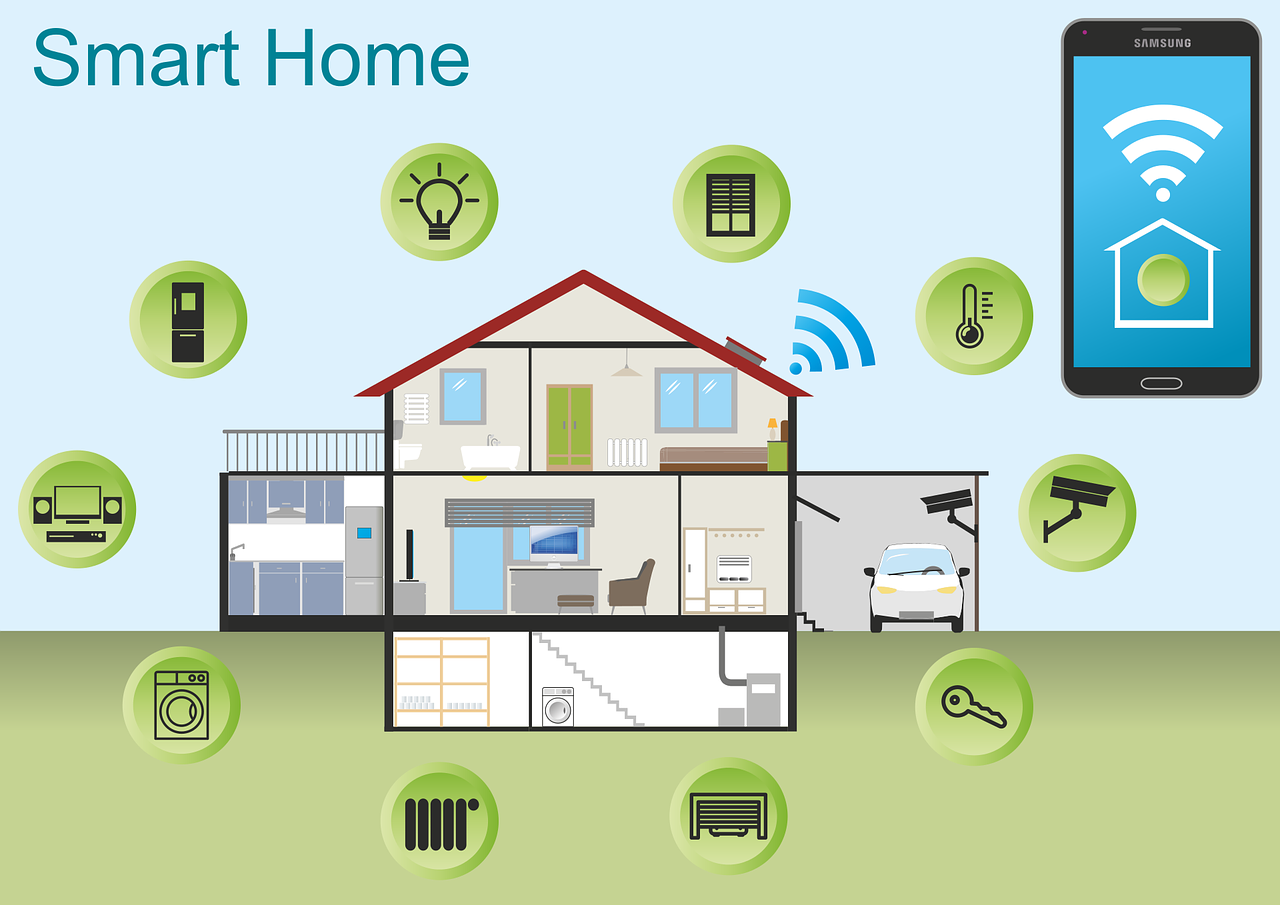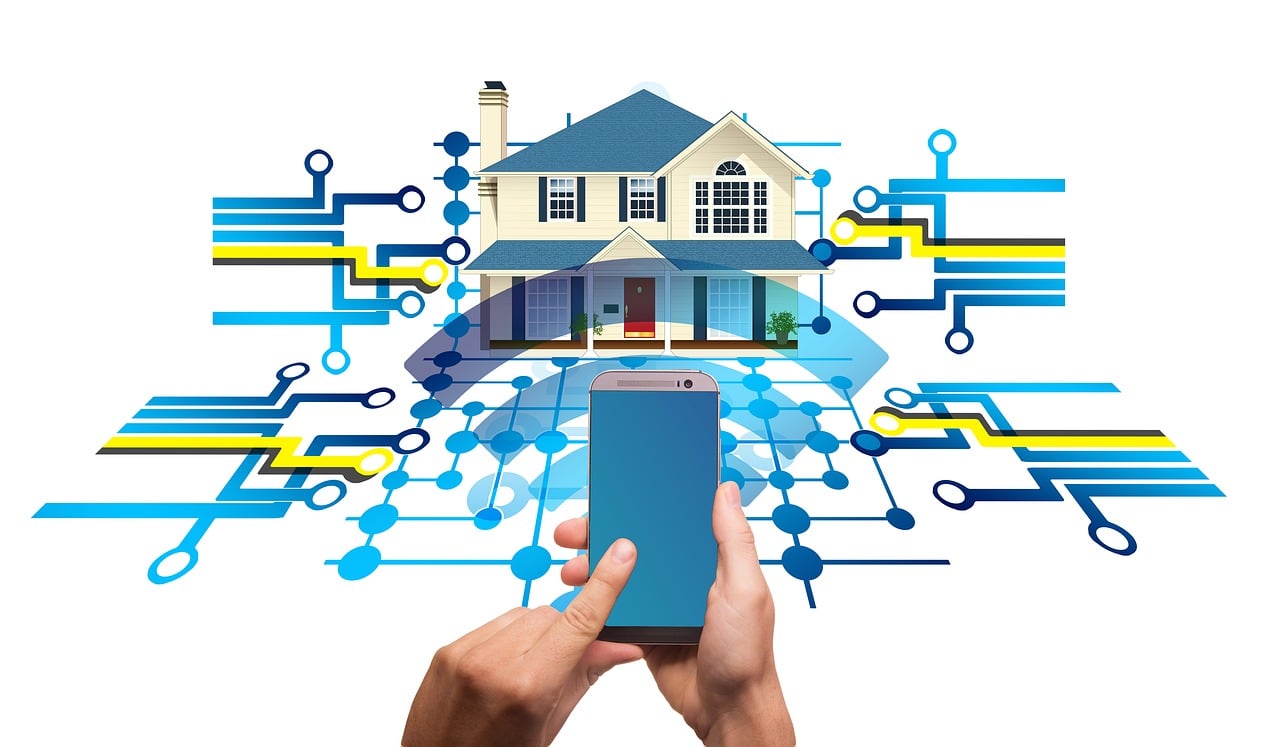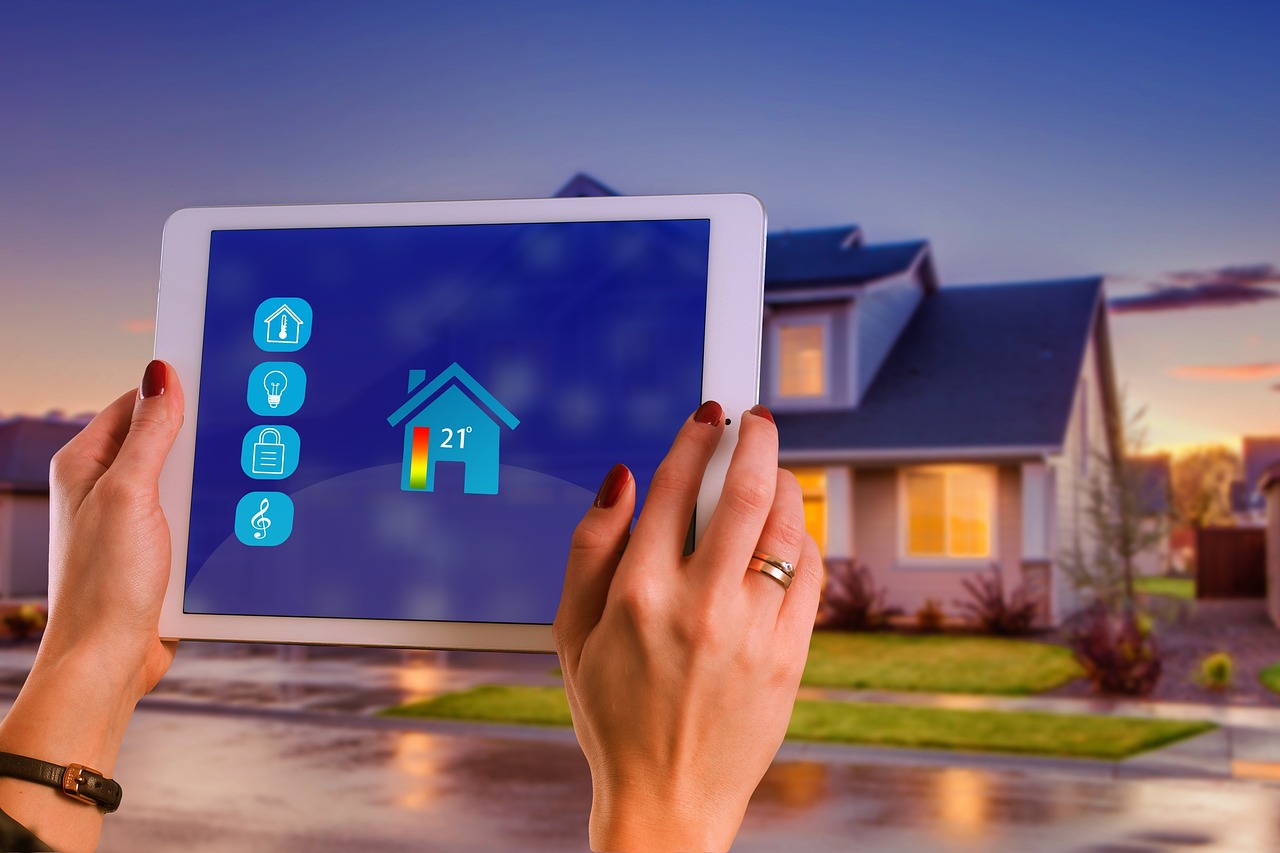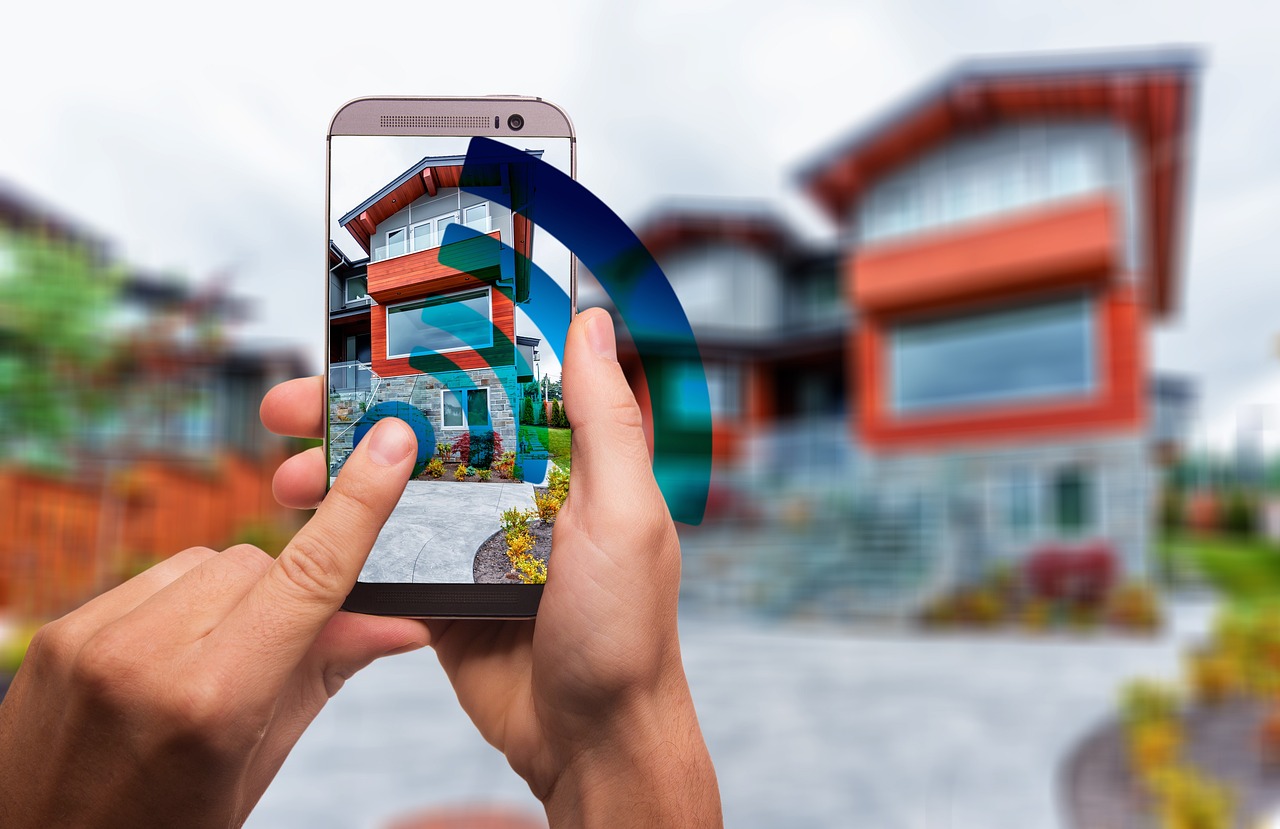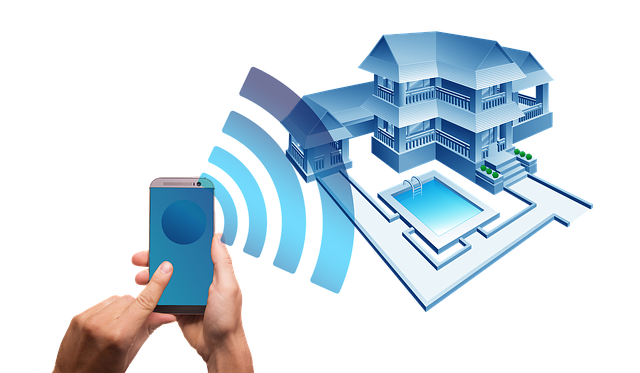Here is our home security guide. Read on!
Home is where the heart is, but it’s also where your most cherished possessions and loved ones reside. As the saying goes, “An Englishman’s home is his castle,” and just like a castle, your home should be fortified against potential threats.
In an era where technology has become an integral part of our lives, home security has evolved beyond sturdy locks and vigilant neighbours.
This comprehensive home security guide explores a myriad of strategies and technologies to safeguard your home, ensuring peace of mind and a secure haven for you and your family.
Table of Contents
Home Security Guide: What Is Home Security?
Home security is a wide-ranging strategy that aims to safeguard your property and family from potential threats, including burglary, theft, fire, and carbon monoxide poisoning.
It encompasses a combination of measures, from physical security enhancements to safety precautions and preventive measures.
The goal of home security is to create a safe and secure environment for you and your loved ones, minimizing the risk of harm and protecting your belongings. A well-secured home contributes to peace of mind and can even reduce insurance premiums.
Key Components of Home Security
Physical Security: This involves strengthening entry points, such as doors, windows, and garages, to make them more difficult to breach. This includes using strong locks, reinforced door frames, and security bars for windows.
Electronic Security: This utilizes advanced technologies to monitor and protect your home, such as alarm systems, security cameras, and smart home devices. Alarm systems can trigger alerts and notifications in case of intrusion, while security cameras provide visual evidence of activity. Smart home devices can be integrated with security systems to automate responses, such as switching on lights or locking doors when an alarm is activated.
Behavioral Security: This focuses on practices and habits that contribute to home security. It includes locking doors and windows when leaving or entering the house, avoiding sharing personal information with strangers, being cautious about opening unsolicited packages or deliveries, and being vigilant about suspicious activity in your neighborhood.
Now, for this home security guide, let me talk about the benefits of home security.
Top Home Security Deals
My experience taught me home security goes beyond alarms and cameras. It’s about awareness, community, and building resilience. True security brings peace of mind, not just physical protection.
Benefits of Comprehensive Home Security
Here are the benefits of home security:
Reduced Crime Risk: A well-secured home is less likely to be targeted by burglars or intruders, minimizing the risk of theft or property damage.
Enhanced Peace of Mind: Knowing that your home is protected from unauthorized access and potential hazards provides a sense of security and peace of mind for you and your family.
Prevention of Fire and Carbon Monoxide Hazards: Proper security measures, such as smoke detectors and carbon monoxide alarms, can alert you to potential hazards and prevent life-threatening situations.
Potential Insurance Discounts: Many insurance companies offer discounts for homeowners who implement comprehensive security measures.
Understanding the Importance of Home Security
Home security encompasses a range of measures aimed at preventing unauthorized access to your property and safeguarding your family and belongings.
It’s not just about deterring burglars; it also involves protecting your home from fire, carbon monoxide poisoning, and other hazards.
A well-secured home offers numerous benefits:
Reduces the risk of burglary and theft: A secure home is less likely to be targeted by burglars, minimizing the risk of losing valuables and personal belongings.
Protects your family: A secure home provides a safe haven for your family, reducing the risk of intruders and creating a sense of peace of mind.
Prevents fire and carbon monoxide poisoning: Proper security measures, such as smoke and carbon monoxide detectors, can alert you to potential hazards and prevent life-threatening situations.
Lowers insurance costs: Many insurance companies offer discounts for homeowners who implement comprehensive security measures.
Assessing Your Home’s Security Vulnerabilities
Before implementing security measures, it’s essential to evaluate your home’s current security posture and identify potential vulnerabilities. This can be done through a self-assessment or by consulting a professional security advisor.
Here are some key areas to consider:
Exterior: Check for entry points, such as doors, windows, and garages, that may be easy to force open. Look for gaps or damage that could allow intruders to gain access.
Interior: Identify potential hiding spots for intruders, such as closets, crawl spaces, and under furniture. Make sure interior doors are solid and have secure locks.
Lighting: Assess the lighting around your home, especially near entry points. Ensure adequate lighting to deter intruders and improve visibility.
Surroundings: Check for potential hiding spots around your home, such as overgrown bushes or dense trees. Trim vegetation to maintain visibility and eliminate hiding spots.
Implementing Effective Security Measures
As you can see from this home security guide, it is imperative to prioritize home security. Once you’ve identified your home’s security vulnerabilities, you can start implementing effective measures to address them. Here are some key areas to focus on:
Strengthen Entry Points: Reinforce doors and windows with solid core materials, secure locks, and strike plates. Install window guards or security bars if necessary.
Install Security Systems: Consider installing a monitored alarm system or security cameras to deter intruders and provide early warning in case of a break-in.
Upgrade Lighting: Install motion-activated lights around your home’s exterior to illuminate dark areas and discourage intruders.
Manage Access: Keep doors and windows locked when you’re away, and avoid leaving valuables in plain sight. Be cautious about sharing keys or access codes with others.
Maintain Landscaping: Trim bushes and trees to maintain visibility and eliminate hiding spots around your home. Keep walkways clear and well-lit.
The Foundation – Physical Security Measures
Your home’s physical security forms the bedrock of your overall security strategy. It involves fortifying entry points, enhancing perimeter visibility, and establishing clear barriers to deter potential intruders and prevent unauthorized access.
Reinforcing Entry Points: The Gatekeepers of Your Home
Doors and windows are the primary gateways into your home, making them the first targets for potential intruders. Strengthening these entry points is essential to safeguard your property and loved ones.
Doors: Upgrade to solid core doors, which offer superior resistance to forced entry compared to hollow-core doors. Install deadbolt locks with a minimum 1-inch throw bolt for added security. Consider smart locks for convenience, keyless entry, and remote monitoring capabilities.
Windows: Replace weak locks with sturdy window locks that can withstand forceful attempts. For enhanced protection, consider installing laminated or tempered glass, which is more resistant to breakage and shattering.
Outdoor Lighting and Landscaping: Illuminating Your Defenses
Properly lit exterior spaces can discourage intruders by making your home less appealing as a target. Strategically placed lighting can also illuminate potential hiding spots and provide better visibility for security cameras.
Motion-Activated Lights: Install motion-activated lights around the perimeter of your home, focusing on entry points, walkways, and vulnerable areas. These lights automatically illuminate when motion is detected, startling intruders and alerting you to potential activity.
Landscaping for Security: Keep bushes and trees trimmed to eliminate potential hiding spots for intruders. Avoid dense vegetation near windows and maintain clear visibility around your home’s exterior.
Fencing and Gates: Defining Your Territory
A sturdy fence and secure gates can serve as a physical barrier, deterring intruders and creating a sense of security for your home.
Fencing for Protection: Choose fencing materials that discourage climbing, such as chain-link fencing with small mesh openings or solid wood fences with adequate height. Avoid fencing with gaps or easily accessible climbing structures.
Secure Gates: Opt for gates with reliable locks that cannot be easily bypassed. Consider electronic gates with access controls for added security and convenience.
Remember, physical security measures should be implemented in conjunction with other security strategies, such as electronic surveillance systems, access control measures, and vigilant behavioural practices.
By creating a layered approach to security, you can significantly enhance the protection of your home and provide a safe haven for your family.
Modern Innovations – Smart Home Security
In the realm of home security, technological advancements have revolutionized the way we safeguard our homes and loved ones.
Smart home security systems offer a comprehensive approach to enhance protection, providing real-time monitoring, remote control, and automated responses that go beyond traditional security measures.
Surveillance Systems: Eyes on Your Home, Day and Night
Modern surveillance systems have transcended the limitations of basic cameras, evolving into powerful tools for comprehensive monitoring. High-definition, weather-resistant cameras with night vision capabilities provide crystal-clear images in any lighting condition, ensuring that your home is under constant watch.
Integrating these cameras with a smart home platform elevates security to a whole new level. Remote viewing capabilities allow you to check in on your home from anywhere, anytime, providing peace of mind while you’re away.
Real-time alerts notify you of any motion or activity detected, enabling you to respond promptly to potential threats.
Smart Doorbell Cameras: Seeing and Communicating with Visitors Remotely
Smart doorbell cameras have become an indispensable addition to modern home security systems. These devices transform your doorbell into an interactive gateway, allowing you to see and communicate with visitors remotely.
When someone approaches your door, the smart doorbell camera sends a notification to your smartphone. You can then view a live video feed of the visitor, engage in two-way communication, and even remotely control the door lock if necessary.
This feature provides an extra layer of safety, allowing you to verify visitors’ identities and control access to your home without compromising your security.
Home Automation Systems: Integrating Security with Convenience
Home automation systems seamlessly blend security with convenience, offering a holistic approach to safeguarding your home. These systems leverage smart devices and interconnected networks to automate various aspects of your home, providing enhanced security while streamlining daily routines.
Imagine leaving your home for the day and activating a “vacation mode” setting. Your smart lighting system simulates your presence by turning lights on and off at different times, creating the illusion of occupancy and deterring potential intruders.
Automated door locks and thermostats can also be remotely controlled, ensuring that your home remains secure and comfortable even when you’re away.
The integration of smart devices into security systems extends beyond mere automation. Smart thermostats can monitor for abnormal temperature fluctuations, alerting you to potential hazards like a fire or a malfunctioning appliance.
Smart smoke detectors can provide early warnings of smoke or carbon monoxide, giving you precious time to react and evacuate safely.
Cybersecurity – Protecting Your Digital Home
While traditional home security measures focus on physical protection, the rise of smart home devices and internet connectivity has introduced new cybersecurity threats.
As our homes become increasingly interconnected, it’s crucial to safeguard our digital environment to prevent unauthorized access, data breaches, and potential harm.
Securing Your Wi-Fi Network: The Gateway to Your Digital Home
Your Wi-Fi network serves as the gateway to your smart home devices and personal information. Securing this network is paramount to safeguarding your digital privacy and preventing cyberattacks.
Strong Password Creation: Establish a strong password for your Wi-Fi network, avoiding easily guessable combinations or personal information. A strong password should be at least 12 characters long and include a combination of uppercase letters, lowercase letters, numbers, and symbols.
Encryption Implementation: Enable encryption for your Wi-Fi network, such as WPA3 or WPA2. Encryption scrambles data transmitted over the network, making it unreadable to unauthorized individuals.
Regular Firmware Updates: Regularly update the firmware of your Wi-Fi router to patch any newly discovered vulnerabilities. Firmware updates often contain security patches that address potential exploits or weaknesses in the router’s software.
Smart Device Security: Protecting the Connected Cornerstones of Your Home
Smart home devices, from thermostats to security cameras, offer convenience and automation, but they also introduce new security considerations.
Default Password Changes: Avoid using default passwords for smart devices, as these are often easy to guess and can provide hackers with easy access. Change default passwords to strong, unique passwords for each device.
Firmware Updates: Regularly check for and install firmware updates for your smart devices. These updates often include security patches and enhancements to protect against vulnerabilities and cyberattacks.
Manufacturer Reputations: Choose smart devices from reputable manufacturers known for their commitment to security. Prioritize devices with clear privacy policies, regular security updates, and a history of addressing security concerns promptly.
Additional Cybersecurity Measures for a Secure Digital Home
Beyond securing your Wi-Fi network and smart devices, consider these additional cybersecurity measures for a comprehensive approach to digital home security:
Install Antivirus and Anti-Malware Software: Install reputable antivirus and anti-malware software on all connected devices to protect against viruses, malware, and other cyber threats.
Enable Multi-Factor Authentication (MFA): Whenever possible, enable MFA for all online accounts, including those linked to smart home devices. MFA adds an extra layer of security by requiring a second verification step, such as a code from your phone, in addition to your password.
Be Cautious About Phishing Attempts: Be wary of phishing emails or websites that attempt to trick you into revealing personal information or clicking on malicious links. Always verify the sender’s authenticity and avoid clicking on suspicious links or attachments.
Educate Family Members: Educate all family members about cybersecurity best practices, including strong password creation, avoiding suspicious links, and reporting any suspicious activity promptly.
By implementing these cybersecurity measures and fostering a culture of cyber awareness within your household, you can significantly enhance the protection of your digital home, safeguarding your personal information, privacy, and the connected devices that enhance your daily life.
Emergency Preparedness: Fortifying Your Home Against Unforeseen Events
Beyond the immediate threats of break-ins and robberies, a well-rounded home security plan encompasses preparedness for a wide range of emergencies, from fires and carbon monoxide leaks to natural disasters and medical situations.
By taking proactive measures, you can significantly enhance the safety and resilience of your home, protecting your family and belongings in the face of unexpected events.
Home Security Systems: A Proactive Guard Against Emergencies
Consider investing in a comprehensive home security system that goes beyond burglar protection. Many modern security systems offer integrated monitoring services, providing 24/7 surveillance and immediate response in case of an emergency.
These systems can detect and alert you to potential threats, such as smoke, carbon monoxide, or unauthorized entry, allowing for swift action and intervention.
Fire and Carbon Monoxide Detection: Safeguarding Your Family from Invisible Hazards
A comprehensive home security plan extends beyond physical threats and includes protection against invisible hazards that can pose serious health risks.
Install smoke detectors and carbon monoxide detectors in all key areas of your home, including bedrooms, hallways, and near potential sources of these gases.
Smoke Detectors: Smoke detectors are essential for early detection of fires, alerting you to the presence of smoke and providing time for evacuation. Install smoke detectors on every level of your home, including the basement, and test them regularly to ensure proper functioning.
Carbon Monoxide Detectors: Carbon monoxide is an odorless, colorless gas that can be deadly in high concentrations. Install carbon monoxide detectors near potential sources of this gas, such as furnaces, water heaters, and fireplaces. Test these detectors regularly to ensure they are functioning correctly.
Emergency Preparedness Toolkit: Equipping Yourself for the Unexpected
In addition to home security systems and safety detectors, assemble a well-stocked emergency preparedness kit that includes essential items for various situations.
First Aid Kit: Equip your kit with basic first aid supplies, such as bandages, antiseptic wipes, pain relievers, and other essential items for treating minor injuries.
Non-Perishable Food and Water: Store a supply of non-perishable food and water that can last for at least three days, ensuring sustenance in case of power outages or emergencies that disrupt regular access to supplies.
Flashlight and Batteries: Keep a flashlight with fresh batteries readily available for use in case of power outages or nighttime emergencies.
Battery-Powered Radio: A battery-powered radio can provide vital information during emergencies when power outages disrupt regular broadcasting services.
Emergency Communication Plan: Develop a clear emergency communication plan with your family members, outlining meeting places, contact information, and emergency protocols.
Regular Maintenance and Drills: Ensuring Readiness for Emergencies
Regular maintenance of home security systems, smoke detectors, carbon monoxide detectors, and other safety equipment is crucial to ensure their proper functioning when needed. Schedule regular checks and replacements of batteries or outdated equipment.
In addition to maintaining equipment, conduct regular emergency drills with your family members. Practice evacuation procedures, identify safe meeting places, and review emergency communication plans to ensure everyone is prepared to respond effectively in case of an emergency.
By implementing comprehensive security measures mentioned in this home security guide, integrating emergency preparedness tools, and maintaining a culture of preparedness within your household, you can significantly enhance the safety and resilience of your home, protecting your family and belongings from a wide range of potential threats and emergencies.
Best Practices For Home Security
Here are some home security best practices:
Physical Security
- Strengthen entry points: Reinforce doors with solid cores and install deadbolt locks for added security. Consider upgrading to smart locks that offer keyless entry and remote monitoring capabilities.
- Secure windows: Invest in high-quality window locks and consider laminated or tempered glass for increased resistance against break-ins.
- Install outdoor lighting: Install motion-activated lights around the perimeter of your home, focusing on entry points and vulnerable areas.
- Trim bushes and trees: Keep bushes and trees trimmed to eliminate potential hiding spots for intruders.
- Consider fencing and gates: A sturdy fence and secure gates can add an extra layer of protection.
Electronic Security
- Install a security system: A monitored alarm system can provide early warning and deter potential intruders.
- Consider security cameras: Security cameras can provide visual evidence of activity and deter intruders.
- Integrate with smart home devices: Smart home devices can be integrated with security systems to automate responses, such as switching on lights or locking doors when an alarm is activated.
Behavioral Practices
- Lock doors and windows: Keep doors and windows locked when not in use, even when you’re home.
- Avoid sharing personal information: Be cautious about sharing personal information online or with strangers.
- Be vigilant: Maintain situational awareness, be alert to your surroundings, and report any suspicious activity to the authorities promptly.
- Establish a neighborhood watch: Collaborate with your neighbors to share information about suspicious activity and deter crime collectively.
- Practice emergency preparedness: Develop a family emergency plan and practice evacuation procedures in case of fire or other emergencies.
By implementing these home security best practices, you can significantly enhance the safety and protection of your home and loved ones.
Wrapping Up The Home Security Guide
To conclude this home security guide, I will say that building a fortress around your home requires a multifaceted approach that combines traditional security measures with modern innovations.
From reinforced doors to smart home technology and digital security, this comprehensive home security guide serves as a roadmap to creating a safe and secure haven for you and your loved ones.
By embracing the latest advancements in home security, you can enjoy the peace of mind that comes with knowing your castle is well-defended against potential threats.
Drop a comment below on this home security guide.
INTERESTING POSTS
About the Author:
Mikkelsen Holm is an M.Sc. Cybersecurity graduate with over six years of experience in writing cybersecurity news, reviews, and tutorials. He is passionate about helping individuals and organizations protect their digital assets, and is a regular contributor to various cybersecurity publications. He is an advocate for the adoption of best practices in the field of cybersecurity and has a deep understanding of the industry.


